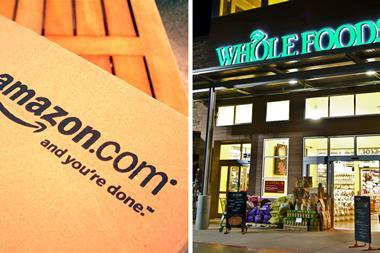I’m a ‘practicologist’, and while not a soothsayer, I do have a reasonably good idea of what’s coming down the track.
This last paragraph of my Retail Week column from October 2013 predicted fairly accurately how Amazon would begin to colonise retail:
“A move into multichannel retailing is highly probable, with bricks-and-mortar to enable its customers to ‘choose how they shop’… It has incredible opportunities to scale its business and remains a serious threat to a large number of established multichannel retailers.”
Since then, Amazon has begun to establish a physical presence with book stores, Amazon Fresh, its acquisition of Wholefoods and Amazon Go, in addition to same-day delivery.
This trend is only going to accelerate. So how should you respond?
“Market share is being taken by marketplaces. Just ask the CEOs of large US retailers such as Macy’s, Nordstrom, Neiman Marcus, JC Penney et al”
Retailers tend to look at their traditional competitive set when thinking about their positioning, customer value propositions, range, marketing, etc. This, I believe, is missing the point.
Market share is being taken by marketplaces. Just ask the CEOs of large US retailers such as Macy’s, Nordstrom, Neiman Marcus, JC Penney et al.
Amazon took 53% of all the ecommerce growth in the US last year, and 43% of total US online revenue, according to research firm Slice Intelligence.
Amazon’s value chain is far superior to most
It has a better logistics network and proposition than anyone else (once you’ve paid for its Prime delivery service, why go elsewhere?); it has a broader range of products than anyone else; it has a better supply chain; and it has a stronger price proposition than anyone else.
It uses customer, product and pricing data more effectively than probably any other retailer – to the level that its ultimate objective is to send you something before you even know you want it; and it has better overall customer service than most.
Of course, it’s not only about Amazon. Alibaba’s Tmall Global will undoubtedly take share, in addition to the sector-specific marketplaces such as Zalando in the fashion space.
Here’s a few tips to ensure continued growth
Create a P&L line for the attribution of the web on your store business – that way you’ll invest appropriately in digital; offer click-and-collect, next-day delivery and free returns to give the customer what they want and expect; and empower your people to do the right thing for customers.
More product searches start on Amazon than Google – so, while the latter is still hugely important, the former may need to become a channel to market for you; adopt a fail-fast, test-and-learn culture – if you have to prove the business case for every initiative, you may not be around in five years’ time.
“Amazon will recruit 5,000 additional UK employees during 2017, at a time when many UK retail stalwarts are shedding roles”
Segment your customers to offer more personalised experiences; rethink the role of stores and how to leverage digital to remove friction and deliver engaging customer experiences; and become a service provider – start by thinking of yourself as a customer service business that just happens to sell stuff.
Amazon will recruit 5,000 additional UK employees during 2017, at a time when many UK retail stalwarts are shedding roles. Whether you choose to embrace Amazon as a channel to market or address your value chain to compete, it’s crucial that every retailer has an Amazon strategy.

Martin Newman is founder and executive chairman of multichannel consultancy Practicology


























No comments yet